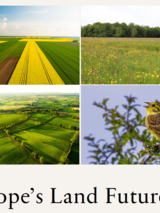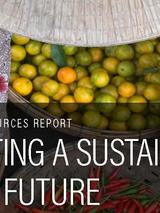Land Use
Abstract
After agriculture, wood harvest is the human activity that has most reduced the storage of carbon in vegetation and soils1,2. Although felled wood releases carbon to the atmosphere in various steps, the fact that growing trees absorb carbon has led to different carbon-accounting approaches for wood use, producing widely varying estimates of carbon costs. Many approaches give the impression of low, zero or even negative greenhouse gas emissions from wood harvests because, in different ways, they offset carbon losses from new harvests with carbon sequestration from growth of broad forest areas3,4. Attributing this sequestration to new harvests is inappropriate because this other forest growth would occur regardless of new harvests and typically results from agricultural abandonment, recovery from previous harvests and climate change itself. Nevertheless some papers count gross emissions annually, which assigns no value to the capacity of newly harvested forests to regrow and approach the carbon stocks of unharvested forests. Here we present results of a new model that uses time discounting to estimate the present and future carbon costs of global wood harvests under different scenarios. We find that forest harvests between 2010 and 2050 will probably have annualized carbon costs of 3.5–4.2 Gt CO2e yr−1, which approach common estimates of annual emissions from land-use change due to agricultural expansion. Our study suggests an underappreciated option to address climate change by reducing these costs.


Abstract
The full, 566 page report, Creating a Sustainable Food Future: A Menu of Solutions to Feed Nearly 10 Billion People by 2050 is now available. The report, of which I was lead author, explores how to meet food needs in 2050 while protecting ecosystems and reducing agricultural greenhouse gas emisisons to acceptable levels, and in ways that could help to reduce poverty and not exacerbate water challenges. The report was prepared by the World Resources Institute in collaboration with the World Bank, UN Environment, the UN Development Programme, and with technical contributions from INRA and CIRAD.
Some articles about the synthesis of the report appear in the New York Times, the Guardian, and Forbes.

